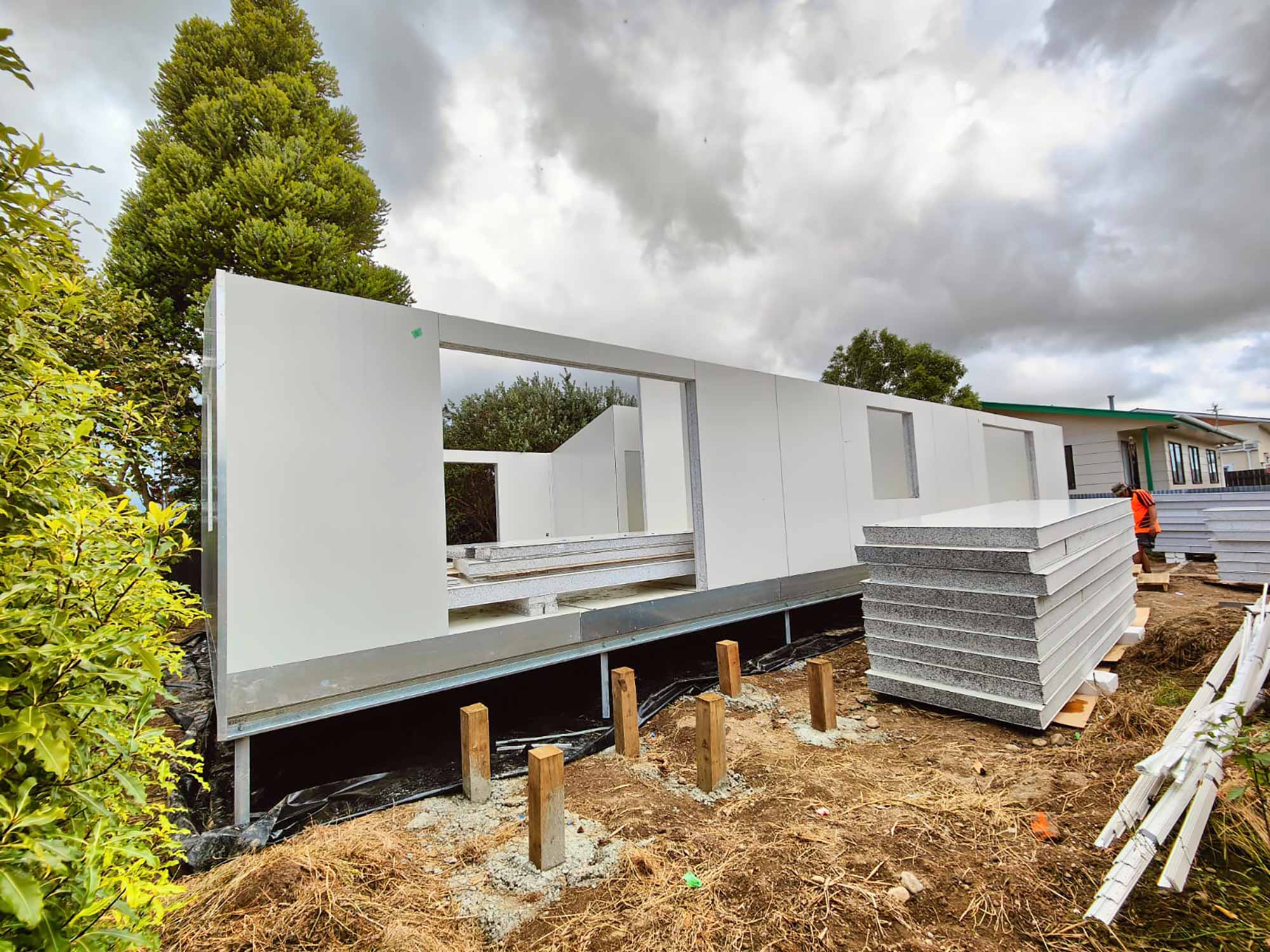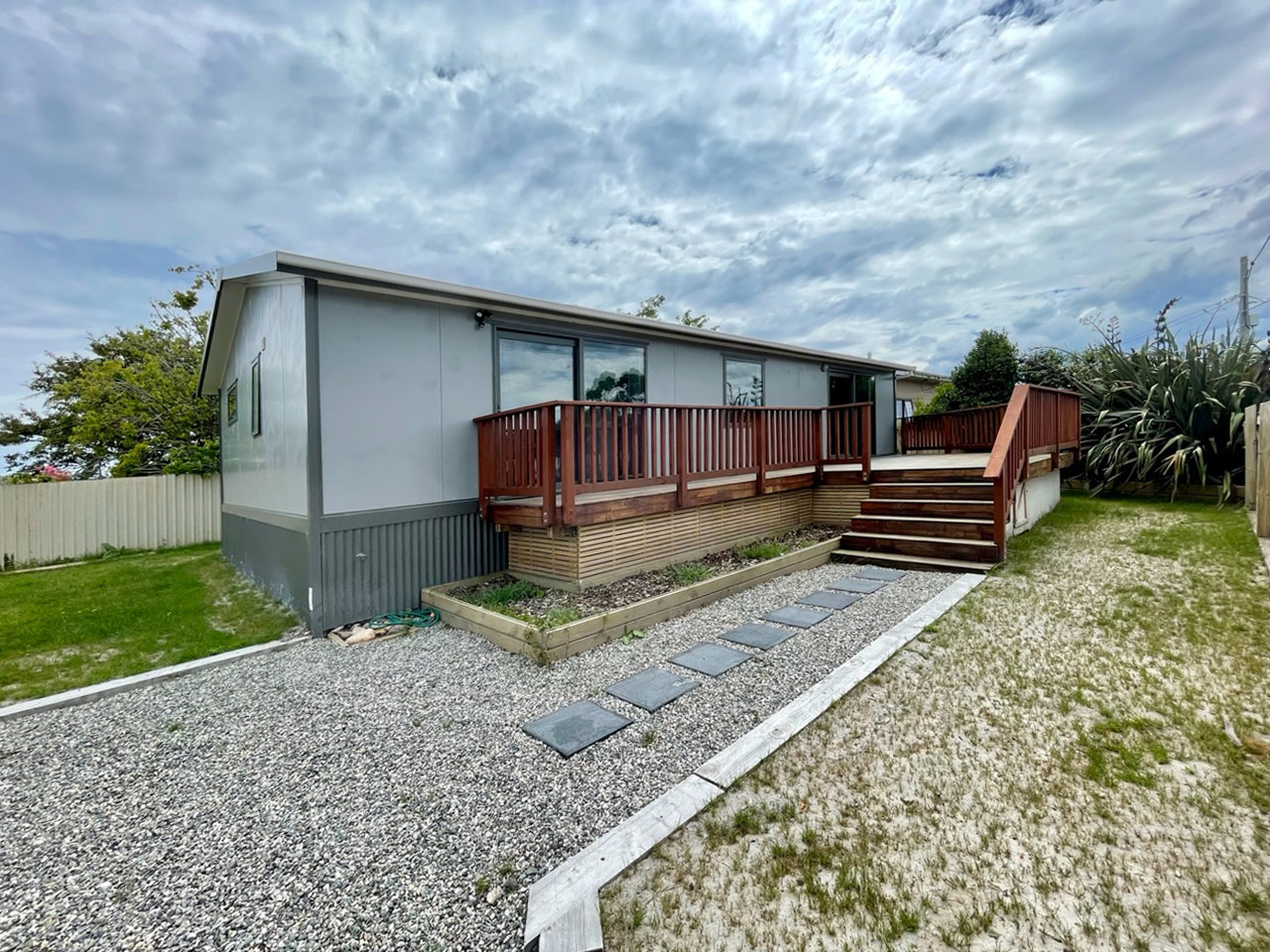
Major events impact New Zealand:
Quakes
Floods
Wind
Fire
Climate change
The question is?
How resilient do you want your home to be?
You could get a home that meets the Building Code. As many people found out recently, even new homes are not resilient to floods, despite meeting the Building Code. Quakes can strike where not expected.
Investing in a resilient house that exceeds the Building Code is a wise investment. And it needn’t cost more.
fact:
The purpose of a flood plain is to flood. If you build on a flood plain, eventually it will flood. A flood resilient house will see you back in your house far quicker. Any house built near a potential water course should be a resilient house. Most are not.
If there’s a managed retreat, take your QuickBuild Home with you.

QuickBuild Homes do not use timber, gib or batts for insulation.
Earthquakes often result in liquifaction and ground movement.
It’s not easy to re-level a house and no house can withstand a major earthquake - not even a QuickBuild home.
But QuickBuild Homes don't use gib in our builds, so no cracking walls.

Our kitset design delivers a stronger, more resilient home.
While most NZ homes are designed to withstand wind, strong gusts can still shake the house and crack any gib.
Repairs are expensive and inconvenient.

QuickBuild Homes do not use gib for wall linings.

What is your house predominantly made from?
Why would you build your house out of an inherently flammable material? It’s far safer to have a house made from inflammable panels.

QuickBuild Homes are made with inflammable panels.
As sea levels continue to rise the NZ Government is talking about managed retreat. A traditional light weight timber frame (LwTF) house is challenging and costly to pick up and move. A QuickBuild Home can easily be saved from destruction by moving it.
As we also face more temperature extremes, houses now need better insulation.

QuickBuild Homes already exceed the new H1 insulation requirements.

A QuickBuild Home raised 1m to avoid flooding - minimal extra cost.
Cost
Time
Foundations
Steel piles, with steel bearers
Low
Days
Resilience to ground movement
Easy to re-level, without occupier needing to vacate property
–
1 Day
Floor Level
Min 600mm above ground
Included
1 Day
Resilience to flooding - up to 600mm deep
Inspect subfloor.
Clean & dry out through natural ventilation if required.
Low
1 Day
Resilience to flooding - Over 600mm deep
Remove carpets, internal doors, wet electrical fittings, kitchen & bathroom cabinets.
Choose and order new flooring and kitchen.
Wash walls and floor - remove silt.
House should dry overnight.
Steel walls and aluminium door frames and reveals mean no water logged walls.
Low - DIY
1 day. Stay with friends/ family for a couple of weeks
Summary
Back in house in a couple of weeks. Short time out of house means you can get on with life very quickly. Insulation still to current standard.
Low
Couple of weeks
Stress Level
Low
Cost
Time
Foundations
Timber piles & bearers, or concrete slab
Higher
Weeks
Resilience to ground movement
If concrete slab can be repaired, occupier needs to vacate, complicated and expensive re-levelling compounds pumped through holes drilled into slab.
Results can vary, and several attempts may be required.
Slab probably irreparable if badly cracked, meaning the house is damaged beyond economic repair.
Very Expensive
Weeks
Floor Level
Usually 150mm above ground level
High. Very high if higher floor level required
Weeks
Resilience to flooding - up to 600mm deep
Extensive Remove flooring, doors, kitchen & bathroom cabinets.
Remove gib and insulation.
Wait to dry out.
Rebuild when dry - many months.
Expensive
Months
Resilience to flooding - Over 600mm deep
Remove carpets, internal doors, wet electrical fittings, kitchen & bathroom cabinets.
Wait for insurance assessor.
Choose and order new flooring and kitchen.
Find builder.
Strip gib to above flood level or complete sheets if a bracing wall, remove insulation
Install dehumidifiers & heaters, dry timber framing.
Council inspection of framing to check for damp.
New carpets, internal doors, door frames and architraves, wet electrical fittings, kitchen & bathroom cabinets.
Very expensive for either insurer or home owner
Months - need to rent somewhere long term
Summary
Living in rented for months, finding furniture for that house that may not be suitable for the repaired house.
Having to re-locate means life on hold for months, maybe new schools for kids.
Insulation may only be to the original standard.
Paperwork with insurance / builders / council, engineers.
Very high
Months to half a year or more
Stress Level
Very high